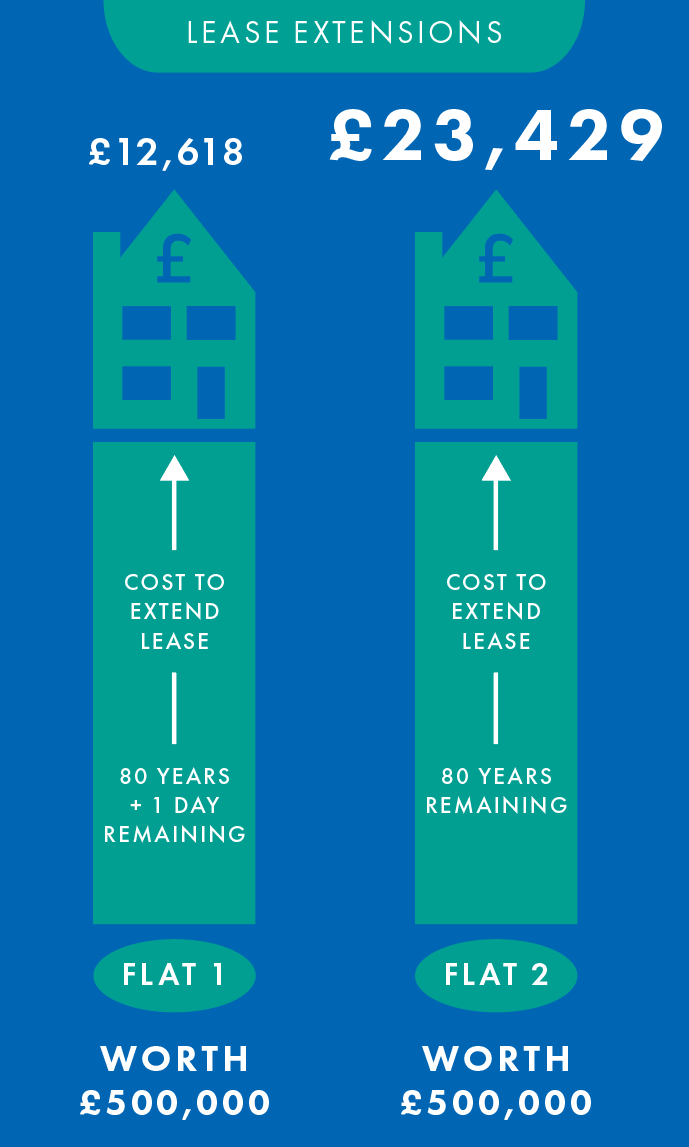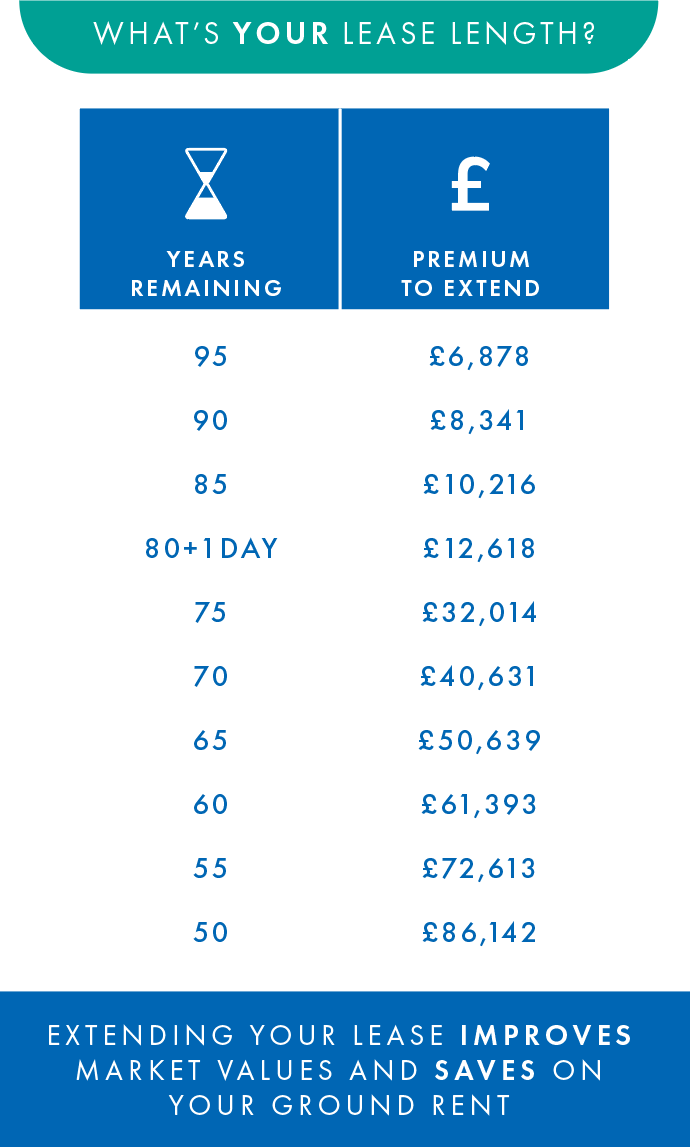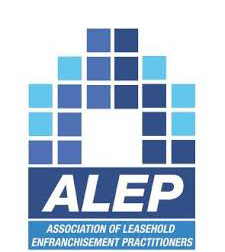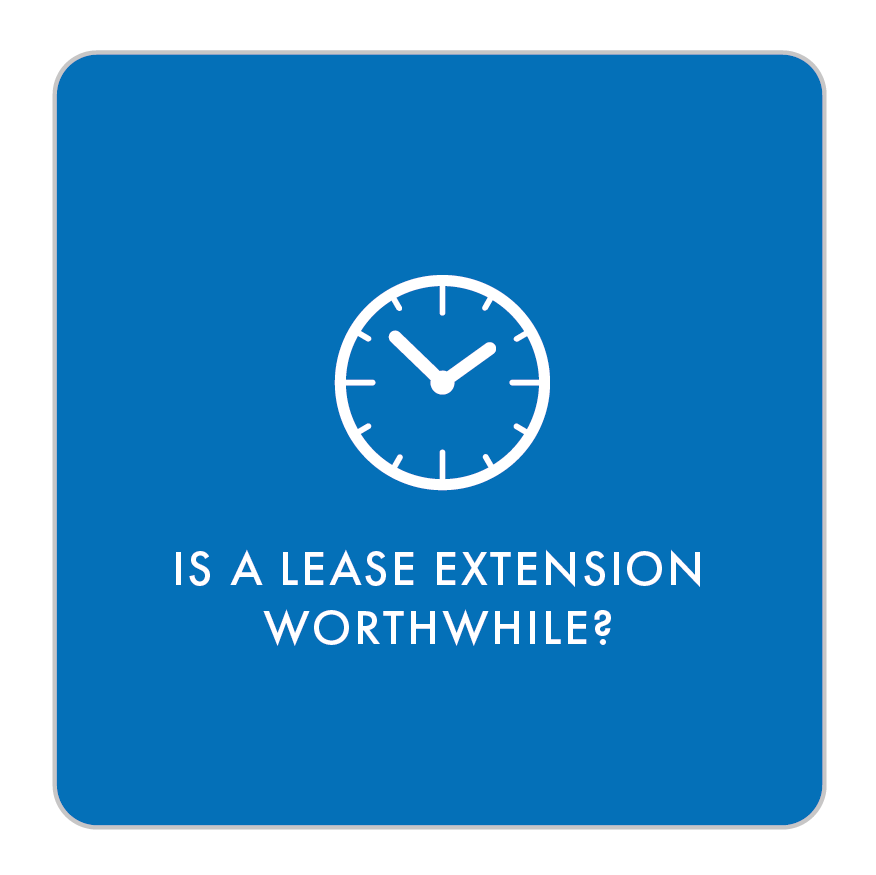Extend your lease
Protect or enhance your property value
IS A LEASE EXTENSION WORTHWHILE?
Consider our reasons for extending your lease and how to do it
The Leasehold and Freehold Reform Act 2024 was given Royal Assent on Friday 24th May 2024. Parliament will create Commencement Orders which make the Act operational Law. They will also provide secondary legislation to set rates within calculations that determine the cost for Lease extensions (or Collective Enfranchisement claims). The new Law becoming operational could happen very quickly or conversely, it could take a number of years. Our advice to you, whilst predominantly based on the current operational law, shall also advise you of the potential implications of law change.
REASONS TO EXTEND
As your lease gets shorter, the value normally falls
Improve market appeal by offering a longer lease
80 years is the magic number. At this point, in most cases the cost to extend increases but delaying costs more
Reduce your ground rent to £zero
Many banks will only lend on leases above a certain length
The longer you wait, the more you may have to pay
How to extend your lease

Voluntary lease extensions
Sometimes agreements can be reached on a voluntary basis through an informal approach. This provides more flexibility but provides risks which the Statutory route mitigates against.
Carrying out an informal (voluntary) lease extension does not have to extend by 90 years or reduce the ground rent to effectively nothing. The parties may choose to agree something completely different. This could result in the ground rent staying the same or even increasing over time. The informal route does not include the serving of a Section 42 Notice (Leasehold Reform, Housing and Urban Development Act 1993) or equivalent, so you cannot ultimately force the Freeholder to come to terms and negotiate over a disputed valuation.
Advantages to a voluntary extension
- You can get a lease for any length of term.
- Saves you paying for a section 42 notice.
- Makes it more affordable if you can’t afford 90 years but can afford a lower number of years.
Disadvantages to a voluntary extension
- No guarantee the process will complete.
- The process doesn’t follow the strict time line set in the Leasehold Reform Act, meaning either side can delay matters
- The valuation isn’t calculated using the formula in the Act – the Freeholder can charge anything they like.
- You may still have to pay ground rent.

Statutory lease extensions
By serving a qualifying statutory notice, your Landlord (e.g. a freeholder) has no choice but to agree to extend your lease. This can cost a little more at first but make savings later and provide some certainty.
The Statutory lease extension route, which is recommended, is enshrined in law (The Leasehold Reform Act 1993 as amended). It involves a qualified Chartered Surveyor (who is also RICS registered valuer) to provide you with a lease extension valuation, then using this figure as a basis for instructing a solicitor to serve your landlord/freeholder with a Section 42 Tenant's Notice to inform them of your intentions to extend the lease.
Your freeholder, if available, must respond and they can either agree, with or without conditions, or disagree. Should they disagree, you (or they) have the option to take the matter to a Leasehold Valuation Tribunal which makes a final decision binding on both parties. Should you or they choose to take the tribunal option, this has to be done between 2 and 6 months of the date of service of the freeholders Section 45 Counter-Notice.
Advantages
- You get a lease with an additional 90 years on top of the current lease term
- The ground rent goes to peppercorn (effectively zero)
- The process must follow a prescribed route with deadlines set for completion
- The premium is calculated the formula contained within the Act. Where there is less than 80 years remaining, the scope for negotiating is greater.
Disadvantages
- You must extend for 90 years and be able to pay the premium.
WE CAN HELP WITH EITHER
LENGTH DOES MATTER


Examples above assume a Prime Central London flat with an extended lease Market Value of £500,000 with a ground rent of £100 p/a rising to £200 p/a for the next 33 years and £400 p/a for the remaining 33 years. For illustration only.
Every lease is different. For example we consider...
Location, Location, Location
How ground rent changes over time
the parties involved
Unexpired term
Improvements that could be discounted
The process and what to expect
WEBSTERS SURVEYORS GUIDE TO LEASE EXTENSIONS

Leaseholder must have owned for at least 2 years or had right assigned and original lease must have been for at least 21 years

If landlord cannot be located or does not reply to Section 42 notice by the date specified, leaseholder applies to court to vest the extension
SECTION 42 NOTICE UNDER THE LEASEHOLD REFORM, HOUSING AND URBAN DEVELOPMENT ACT 1993
- Leaseholder solicitor serves notice specifying proposed lease extension terms
- Suggested premium payable is informed by Chartered Surveyors valuation
- The term will increase by 90 years and ground rent reduce to zero
- A minimum 2 month notice must be provided for Landlord to reply

SECTION 42 NOTICE UNDER THE LEASEHOLD REFORM, HOUSING AND URBAN DEVELOPMENT ACT 1993
- Landlord serves counter notice accepting or proposing terms
- Suggested premium payable is informed by Landlords Chartered Surveyors valuation
- Leaseholder required to pay reasonable valuation fee
- Landlords solicitor can request a 10% deposit based on the Section 42 figure

Negotiations + Tribunal reference
- Negotiations ensue with each side paying their own costs
- Between 2-6 months of the Section 45, either side can apply to the First Tier Tribunal for a binding judgement
Nearly all cases are settled by agreement.

Agreement or determination
- Once agreement is reached, Solicitors create the new extended lease. The leaseholder pays the reasonable cost for the Landlords as well as their own
OR
- If the Tribunal determines the terms, it gives directions for the lease to be extended. Solicitors costs are as with agreement

Absentee Landlords
and Administrative Restoration

BANKRUPT
Landlord is Bankrupt

Landlord is Bankrupt

COMPANY RECEIVERSHIP
Landlord’s company in receivership.

Landlord is Bankrupt

UNTRACEABLE LANDLORD
If the Landlord cannot be located after reasonable efforts having first been made, the premium can be set through application to the County Court for a vesting order. We can provide the required Expert Witness report advising on a suitable premium to the First Tier Tribunal.

MY LANDLORD’S COMPANY HAS BEEN STRUCK OFF
Assets are likely to have become ‘bona vacantia’, that is they have no owner so become vested by the Crown. In our experience, the Treasury Solicitor, on behalf of the crown, may be willing to extend the lease or sell the freehold by agreement. This is all done by negotiation.

I OWN THE COMPANY THAT HAS BEEN STRUCK OFF
It is possible to have a company restored onto the Register of Companies through a process called Administrative Restoration.

ASPECTS OF VALUATION
LOSS OF THE GROUND RENT
Paying ahead can make considerable savings over time as rent is capitalised to calculate a value today

The statutory route reduces ground rent to nil whilst the voluntary route provides flexibility but risks

The yields we negotiate can affect the amount payable

75 year lease with a ground rent of £300pa for 9 years then doubling for following 33 years and doubling again for the last 33 years
Illustration only
OPTION 1 - DO NOTHING
Pay £62,100 ground rent over remaining lease term
OPTION 2 - Statutory lease extension
Payment of £8,572 with rent reduced to £nil
OPTION 3
Under a voluntary lease extension, negotiate something different

ASPECTS OF VALUATION
Loss to the landlord of waiting longer till the lease expires

By taking a Statutory Lease Extension, the Landlord has to wait a further 90 years

Calculations of how much the market would pay now to have a valuable asset at a future date

The yields we negotiate can affect the amount payable

75 year lease on a property with a hypothetical long lease value of £350,000
Illustration only
Estimated reversion value based on common assumptions
£9,013
Waiting just 5 years increases the costs
£11,503
A 0.5% reduction in the yield increases the costs
£12,893

ASPECTS OF VALUATION
Share of Increase in value
from altering from a short to a long lease
“So we have the General Theory of Relativity, the Special Theory of Relativity and Relativity in leasehold valuations.
By Comparison the first two are easier to understand.
It should not be so.”
(Ian Newberry - Law Gazette)

With little transactional short lease evidence, graphs of relativity are often used to estimate the relationship in value between short and long lease/freehold values

Different graphs of relativity provide different premiums due. Part of Websters Surveyors expertise is in seeking market evidence or choosing which graph is appropriate for the area and property, what can be negotiated and what further adjustments are warranted

When a lease falls to 80 years or below, the difference in value between a short lease and a long lease is shared 50-50 between leaseholder and Landlord. At above 80 years the Landlord receives no marriage value

A property with a hypothetical long leasehold value of £350,000 with no ground rent payable
TERM
80 YEARS + 1 DAY
Marriage value does not apply
£0 Marriage Value
TERM
80 YEARS
Depending on graph selection, Marriage value could be:
AS LOW AS £7,940
TERM
80 YEARS
Depending on graph selection, Marriage value could be:
UP TO £13,419
Other Factors
WEBSTERS SURVEYORS CAN ALSO ADVISE ON A NUMBER OF OTHER FACTORS
DISCOUNTED IMPROVEMENTS

Statute law requires that improvements are disregarded in determining elements of Market Value. There is often a negotiation over the extent of what is to be disregarded.
TRIBUNAL DECISIONS REVIEW

Statute law requires that improvements are disregarded in determining elements of Market Value. There is often a negotiation over the extent of what is to be disregarded.
Review of the lease

Ground rent clauses impact on the premium payable. Unconsented alterations can be used as leverage in negotiation with documentation often cleared up afterwards.
Impact of fees

The leaseholder is responsible for the landlords reasonable valuation (not negotiation) and legal fees to effect the transaction. Both sides will consider the impact on fees as negotiation draws towards a close.
First Tier Tribunal
If agreement cannot be reached, there is a right to a binding third party determination by the First Tier Tribunal. However, although applications are common, a full hearing is rarely required as the system is designed to bring the two sides to a compromise agreement. As part of this, the two Surveyors must exchange calculations and nearer the hearing date, a Statement of Agreed Facts and disputed matters. Once applications are made, the Surveyors on both sides then have a duty of care to the Tribunal so can no longer take negotiating positions.
We shall only recommend going to the Tribunal when we think its the right thing to do, including considering the cost implications as well as likelihood of success.
REQUEST A QUOTE
KEEPING IT SIMPLE
Whilst Valuation can be complex, you shouldn’t need to be a Chartered Surveyor to understand our advice. At Websters Surveyors, we try to remove Jargon, using plain English wherever possible. If something still isn’t fully understood, our team of Chartered Surveyors and support staff are on the end of a phone, happy to help.
At Websters our Chartered Surveyors (who are also RICS registered valuers) have the necessary knowledge and expertise to carry out surveys across London and the South East.
We endeavour to provide valuation advice in compliance with the RICS Valuation – Global Standards, also referred to as the RICS ‘Red Book’. This document sets out the gold standard for undertaking valuations through a quality assured process, so you can have confidence that consistency, objectivity, transparency and a high standard of service is maintained.











